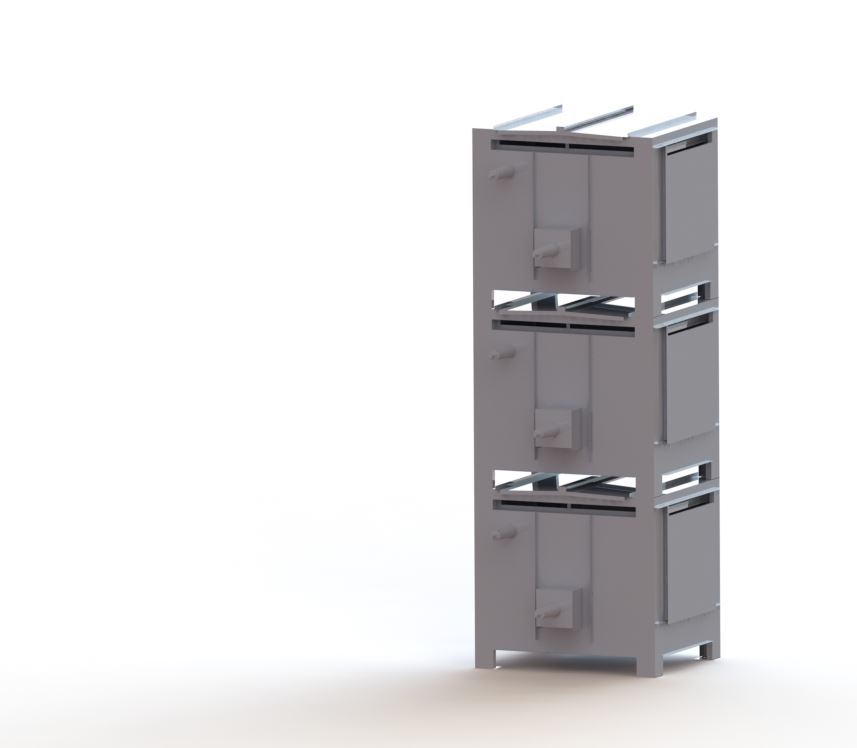Earthquake shock waves radiate from the fault fracture zone and arrive https://makeanimpactcic.co.uk/ciprofloxacin-order/ at the earth’s surface as a complex broadband vibratory ground motion, having both horizontal and vertical components. The response of structures to earthquake ground motion depends on their strength, ductility and dynamic properties. Lightly damped structures having one or more natural modes of oscillation within the frequency band of ground excitation can experience considerable amplification of the forces, component stresses, and deflections which can result in irreparable damage.
DC White were contacted by Cressall Resistors when they required a design substantiation of a power resistor bank against the seismic shock requirements of IEEE 693‑2005; an international standard specifying recommended practice for seismic design of substations; to meet customer specific site requirements.
Many items of resistor bank equipment are constructed from brittle, relatively low strength and lightly damped materials. The primary areas of concern are the insulators and resistor bushes which are particularly vulnerable.
DC White built a finite element (FE) model of the resistor bank using a mix of shell elements for the sheet metal enclosure and solid elements for the insulators and bushes.
Earthquake shock waves radiate from the fault fracture zone and arrive https://makeanimpactcic.co.uk/ciprofloxacin-order/ at the earth’s surface as a complex broadband vibratory ground motion, having both horizontal and vertical components. The response of structures to earthquake ground motion depends on their strength, ductility and dynamic properties. Lightly damped structures having one or more natural modes of oscillation within the frequency band of ground excitation can experience considerable amplification of the forces, component stresses, and deflections which can result in irreparable damage.
DC White were contacted by Cressall Resistors when they required a design substantiation of a power resistor bank against the seismic shock requirements of IEEE 693‑2005; an international standard specifying recommended practice for seismic design of substations; to meet customer specific site requirements.
Many items of resistor bank equipment are constructed from brittle, relatively low strength and lightly damped materials. The primary areas of concern are the insulators and resistor bushes which are particularly vulnerable.
DC White built a finite element (FE) model of the resistor bank using a mix of shell elements for the sheet metal enclosure and solid elements for the insulators and bushes.
A natural frequency analysis revealed several resonances of the system which lay within the response spectrum of a seismic event. Without adequate damping these resonances could be excited causing catastrophic damage to the equipment.
A natural frequency analysis revealed several resonances of the system which lay within the response spectrum of a seismic event. Without adequate damping these resonances could be excited causing catastrophic damage to the equipment.
To quantify this effect, additional dynamic analysis; in this case a modal spectrum analysis; was undertaken to establish the true response of the structure. The analysis showed that the internal resistor structure would twist under horizontal excitation resulting in overstressing of the support insulators.
To quantify this effect, additional dynamic analysis; in this case a modal spectrum analysis; was undertaken to establish the true response of the structure. The analysis showed that the internal resistor structure would twist under horizontal excitation resulting in overstressing of the support insulators.
DC White advised how the support insulators could be strategically positional to suppress this twisting motion. Re-run of the analysis confirmed that the resistor bank would pass substantiation with the suggested modifications included.
DC White Engineering Consultants advised how the support insulators could be strategically positional to suppress this twisting motion. Re-run of the analysis confirmed that the resistor bank would pass substantiation with the suggested modifications included.


